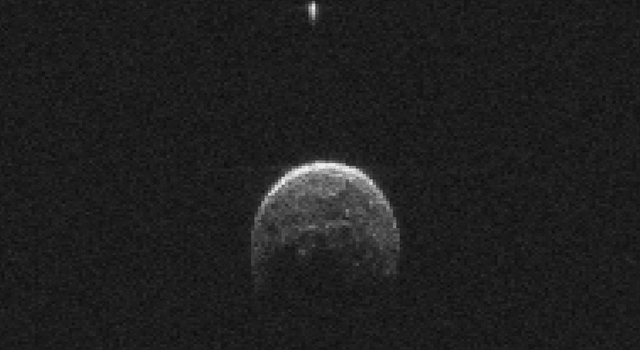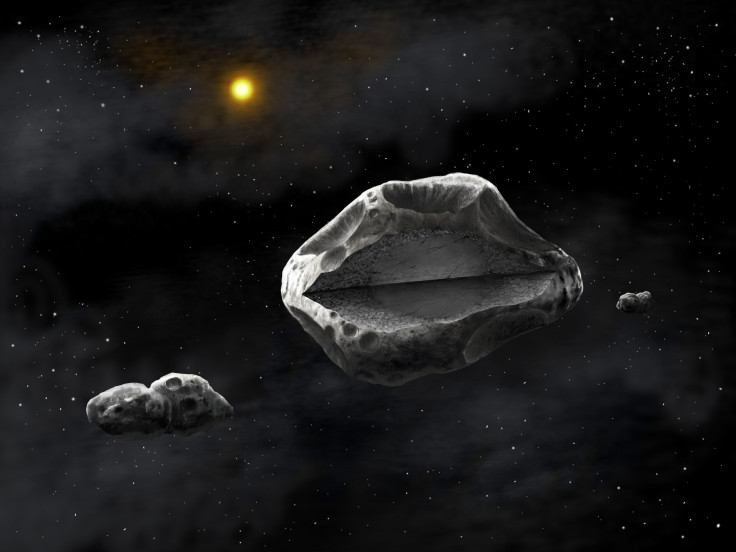Asteroid 2004 BL86 Has A Moon: Other Space Rocks With Ring Systems And Moons

Asteroid 2004 BL86 passed by Earth at a close, but safe, distance of 745,000 miles. Scientists were eagerly awaiting its arrival and were rewarded with an additional surprise. Radar images were able to capture asteroid 2004 BL86's small moon, a surprising, but not uncommon feature of asteroids.
Asteroid 2004 BL86's Moon
Monday was the first time astronomers were able to get a look at asteroid 2004 BL86 and it did not disappoint. NASA trained its Deep Space Network antenna at Goldstone, California, and the Arecibo Observatory in Puerto Rico on the object as it flew by Earth to obtain radar images of the asteroid. The Deep Space Network delivered the first images of the rock and it turns out asteroid 2004 BL86 has a moon. The small satellite, measuring 230 feet, is not an uncommon feature for asteroids, with NASA estimating 16 percent of these objects having one or two moons. The asteroid, measuring a third of a mile, will not pass this close to Earth again for 200 years.

In 1993, NASA's Galileo spacecraft was able to confirm the first asteroid with a moon. Galileo passed 243 Ida as it was heading to the Jupiter system Aug. 28, 1993. A full list of asteroids with moons can be found here.
An Asteroid With a Ring System
While a moon may not be unusual, a ring system around an asteroid was completely unheard of until last year. Asteroid Chariklo, approximately 155 miles in size, is a billion kilometers from Earth and is the smallest object to have a ring system. Researchers were waiting for Chariklo to occult, or pass in front, of the star UCAC4 248-108672. With the light of the star blocked out, the astronomers were able to observe two rings around the asteroid, nicknamed Oiapoque and Chuí, after two rivers in Brazil. Future observations could lead to the discovery of a small moon.
Triple Asteroid System 87 Sylvia

Asteroid 87 Sylvia has not one, but two moons. The asteroid was the first discovered to have two moons, the first satellite was discovered in 2001 and the second in 2005, according to the SETI Institute, which seeks out intelligent life in universe. The asteroid has a low density and may be covered in loose rubble.

Of the two moons, Romulus and Remus, the former may have two lobes. Other triple asteroid systems include 45 Eugenia, 3749 Balam, 93 Minerva and 216 Kleopatra.
© Copyright IBTimes 2024. All rights reserved.




















